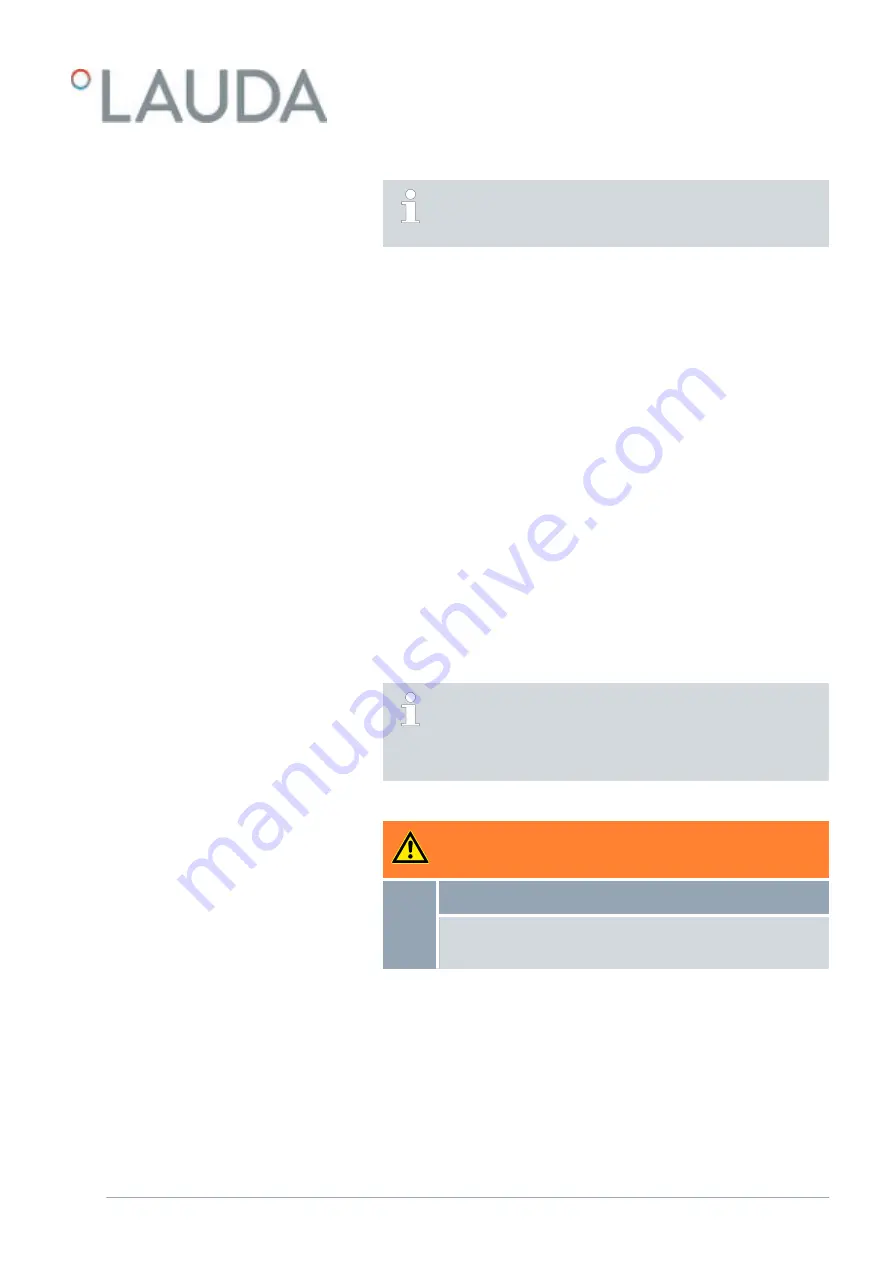
When operating on a pressure-sensitive application (e.g. a glass
reactor), you must install a pressure relief device (e.g. a safety valve)
in the hydraulic circuit.
If processes in the application lead to higher temperatures, boiling-out may
occur. This causes the temperature control to break down, but the constant
temperature equipment continues to control the temperature as far as pos-
sible. To solve the problem, you must either increase the pressure overlay or
reduce the maximum set temperature.
Tmax and Tmax_return are parameters which are relevant to safety. If the
values of Tmax or Tmax_return are exceeded, the constant temperature
equipment switches off with an alarm. Tmax_return can be set higher than
Tmax, since the reverse flow temperature in cooling processes can be signifi-
cantly higher than the outflow temperature, which is monitored by Tmax.
Set these values as high as safety permits.
Do not use these parameters to control degassing processes, otherwise the
temperature control process may be completely interrupted.
8.6 Filling and operating a device with pressure overlay
A supply of compressed air (or nitrogen) must be available to enable opera-
tion with pressure overlay.
n
Pressure: 5
‑
8 bar
n
The compressed air must be free of oil.
n
1 kg of compressed air must not contain more than 1.7 g of water.
n
Workshop coupling NW 7.2 (on the constant temperature equipment)
Only these heat transfer liquids are permitted for devices with
pressure overlay:
LAUDA Kryo 30
Water-glycol mixture
WARNING!
Overflow of heat transfer liquid
Slipping or falling over
Do not overfill the device. Pay attention to the level indi-
cator of the device in this respect.
Compressed air supply
Filling with heat transfer liquid
V6
Integral Process Thermostats and High-Temperature Thermostats
137 / 198















































